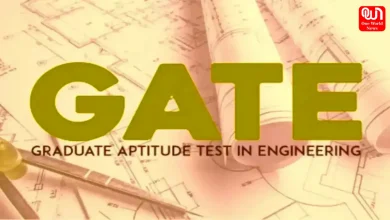Expert Tips to Crack the SAFe® Agilist Exam in 2023
SAFe Agilist certification enables you to effectively utilize Leading Agile's concepts, tools, and practices in a competitive environment
SAFe® Agilist Exam: Gear up for your transition from small teams to large teams using Lean-Agile principles
In an ever-expanding IT sector, there is an ongoing demand for improved management, execution, and delivery methods to keep up with the industry’s rapid growth and evolution. In the long term, the employees will have happier clients if they are more professional. The majority of businesses worldwide, including many Fortune 500 companies, depend upon the Scaled Agile Framework and its techniques to develop the required management and delivery system.
For large-scale enterprises, the techniques and ideas of lean agile have shown to be particularly helpful. However, this is only feasible if these methods are used throughout the whole Agile transformation process. The SAFe Agilist certification enables you to effectively utilize Leading Agile’s concepts, tools, and practices in a competitive environment. It promotes a seamless Lean-Agile transition and increases the range of operations in an Agile environment, both of which have a significant positive impact on the organization and the person.
What is SAFe® Agilist certification?
The transition from small teams to large teams using Lean-Agile principles benefits greatly from a SAFe® Agilist Certification. The Scaled Agile Framework enhances product delivery through Lean thinking, improved development and operations, better product development, and PI planning. All of these elements help to make the Scaled Agile framework widely regarded in the field, and more and more employers are searching daily for individuals educated in SAFe® thinking.
The main goal of SAFe® Agilist certification is to enhance workflow by implementing lean-agile thinking in circumstances that call for good management and leadership. Leading the team and managing complicated challenges throughout the process should be the duty of a person with training in Leading SAFe®. They receive training in creating a better-organized management system as well as enhancing team communication. Better communication with customers and other corporate stakeholders is also made possible by this upgraded system.
SAFe® Agilist Exam & Certification Details
Area Of Competencies
- Strong understanding of SAFe® concepts, beliefs, and procedures for corporate implementation.
- Creating an Agile Portfolio through improved lean-agile budgeting.
- Values should be planned, carried out, and released using the Agile Release Train (ART).
- Put lean-agile ideas to use.
- Assist and support the organization in its agile transition.
Exam Prerequisites
- Attend the two-day Leading SAFe® class. Classes are required since they give students access to all the required reading and examination materials.
- 5+ years of experience in software development, testing, product management, business analysis, or project management is required.
- Scrum knowledge.
Exam details
Business partners of Scaled Agile, Inc. provide the Leading SAFe® class, which lasts for two days and is listed on their website. Once the training on the SAFe® Community Platform is complete, the SAFe® exam is accessible. Following training, the exam must be taken within 30 days of the initial attempt. A $50 fee will be imposed on those who either delay the exam for over 30 days or retake it. Candidates have the freedom to select their preferred exam date. The initial registration fee for candidates will now cover the examination cost.
The test is a timed, multiple-choice, web-based exam with a closed book. English is the language used for the test. The test consists of 45 questions, and it has a 90-minute time limit once it begins. To achieve a passing grade, a minimum of 35 correct answers out of 45, which is equivalent to 77%, is required.
Exam Study Materials
- Study Guide – The PMP guidebook by the Project Management Institute serves as a study manual for the exam, providing a comprehensive overview of test preparation and a breakdown of the topics that form the basis of exam questions rather than being a mere tip sheet.
- Course Material – A Leading SAFe® workbook covering the theory and application of SAFe® will be given to you.
- Practice test – On the website of Scaled Agile, Inc., it is stated that “the practice test is meant to be reflective of success on the certification exam, and it has the same number of questions, degree of difficulty, and time period. It is cost-free and available to be taken as often as necessary.” The fact that you pass this exam does not ensure that you will succeed on the certification exam.
- Sample Questions – Online and in the study guide, you can access example questions in a web-enabled flashcard format.
SAFe® Agilist Certification
The function of a SAFe® Agilist is to assist organizations in implementing the SAFe® Agile Framework, which is a collection of best practices for agile software teams. They fulfill the SAFe® Enterprise Leadership role in guiding the enterprise’s lean-agile transition. The major objective of SAFe certification is to improve workflow by using lean-agile thinking in situations that need effective management and leadership.
Exam Retake Policy
The first retake of the exam can be attempted immediately after the initial attempt, serving as the second try. A 10-day waiting period is required before the third attempt, and a 30-day waiting period is enforced before the fourth attempt. This approach aligns with the conventional notion in standardized testing that increased intervals are needed between attempts, assuming that more time is required to adequately prepare and implying that readiness is not yet achieved.
Expert Tips to Crack the SAFe® Agilist Exam
Obtain Information Regarding Exam Details
The SAFe® agilist certification test has a duration of 90 minutes, with 45 questions to be answered. Each question must be addressed within a two-minute time limit. It is not necessary to provide a detailed response for the entire two minutes. However, keeping track of the time spent on each question is beneficial due to the time constraint. If unsure, you can either postpone the question for later or make an educated guess. Incorrect answers do not result in negative markings or penalties.
Acquire Professional Experience
To successfully pass the SAFe® Agilist examination, practical experience holds significant importance. Qualifying for an Agile Certification requires a thorough understanding and application of Agile principles throughout your real-world experience, starting from day one. To undertake the SAFe® certification exam, you must possess at least five years of expertise in working on IT projects, specifically those within the agile realm.
Read more:- India’s Finest: The Top 10 CA Firms in India Revolutionising Financial Excellence
Practical experience is crucial to comprehend all the principles covered in the agile certification exam, as it allows you to apply theoretical knowledge to overcome challenges in the real world. Having a strong understanding of agile frameworks and how to effectively implement them in day-to-day operations at your organization is crucial.
Understand the study materials in detail
In order to grasp the topics that need to be covered before the exam, it is essential to have the required study materials at your disposal. Obtaining the necessary reading materials, either from a physical store or online, is crucial for exam preparedness.
To familiarize yourself with the requirements for the SAFe® Agilist exam, consider signing up to become one of the 150,000 SAFe® community members who have successfully passed it. Our community is dedicated to providing you with essential resources to help you plan and prepare for the SAFe® Certification test. Alongside practical expertise, you will also benefit from real-world ideas and examples.
Learn From A Mentor
Finding the right mentor to lead you, rather than gathering knowledge online and offline, will increase your preparedness. It might be easier to apply what you have learnt in the classroom to actual circumstances if you have a mentor who has finished the programme.
Read more:- South Indian States Crucial For India’s $5 Trillion Economy Goal
After you’ve finished preparing, take the mock test
It is recommended to take the SAFe® Agile Certification exam immediately after completing your studies, as it will be easier to recall and apply the knowledge gained. However, if you pass the initial exam, you can retake it right away. In case of an unsuccessful attempt, a ten-day waiting period is required before attempting again.
Select Trusted Training Institutes
Finding a mentor and seeking their assistance is becoming increasingly challenging due to time constraints. To succeed in SAFe® agile certification tests, it is crucial to maintain focus and select reputable educational institutions that can provide training and support for mental preparation.
Conclusion
You will benefit substantially from all of the recommendations listed above. Just keep in mind that your perseverance will be your only asset. To grasp SAFe® ideas, channel your desires and thoughts and deeply examine each subject covered in this article. These recommendations will not only help you obtain certification but also provide you with the information you need to advance professionally.
To better prepare for the scaled agile exam, read over the articles on the scaled agile website as well as the additional study resources provided by the training facility. Take as many practice exams as needed to familiarize yourself with the format and mentally prepare. Decide on a mentor and engage in ongoing discussions. Apply the aforementioned ideas in your day-to-day actions at work to gain practical knowledge.
Read more:- Centre meets FY23 fiscal deficit target of 6.4% of GDP
FAQs
Q1. What is the passing score for SAFe® Agilist Exam?
Ans. Getting 77% is necessary to qualify for the SAFe® Agilist exam. Thirty-five accurate answers out of 45 are required for a passing grade.
Q2. How long does it take to prepare for SAFe® Agilist certification?
Ans. A two-day training session is required as part of the SAFe® Agilist certification process. In order to succeed on the SAFe® Agilist certification test, the applicant will benefit from this training’s assistance in comprehending and using the SAFe® framework.
Q3. What is the difference between SAFe® Agilist and SAFe® scrum master?
Ans. The Leading SAFe® Agilist is more concerned with the tactical and operational elements of adopting SAFe®, whereas the SAFe® Scrum Master (SSM), in a particular role, is more concerned with the strategic and organizational aspects.
Q4. How difficult is the SAFe® Agilist exam?
Ans. The SAFe® Agilist examination is generally relatively challenging to pass. If you lack expertise and guidance, passing the top SAFe® test is difficult. You must do thorough preparation and adhere to professional advice.








